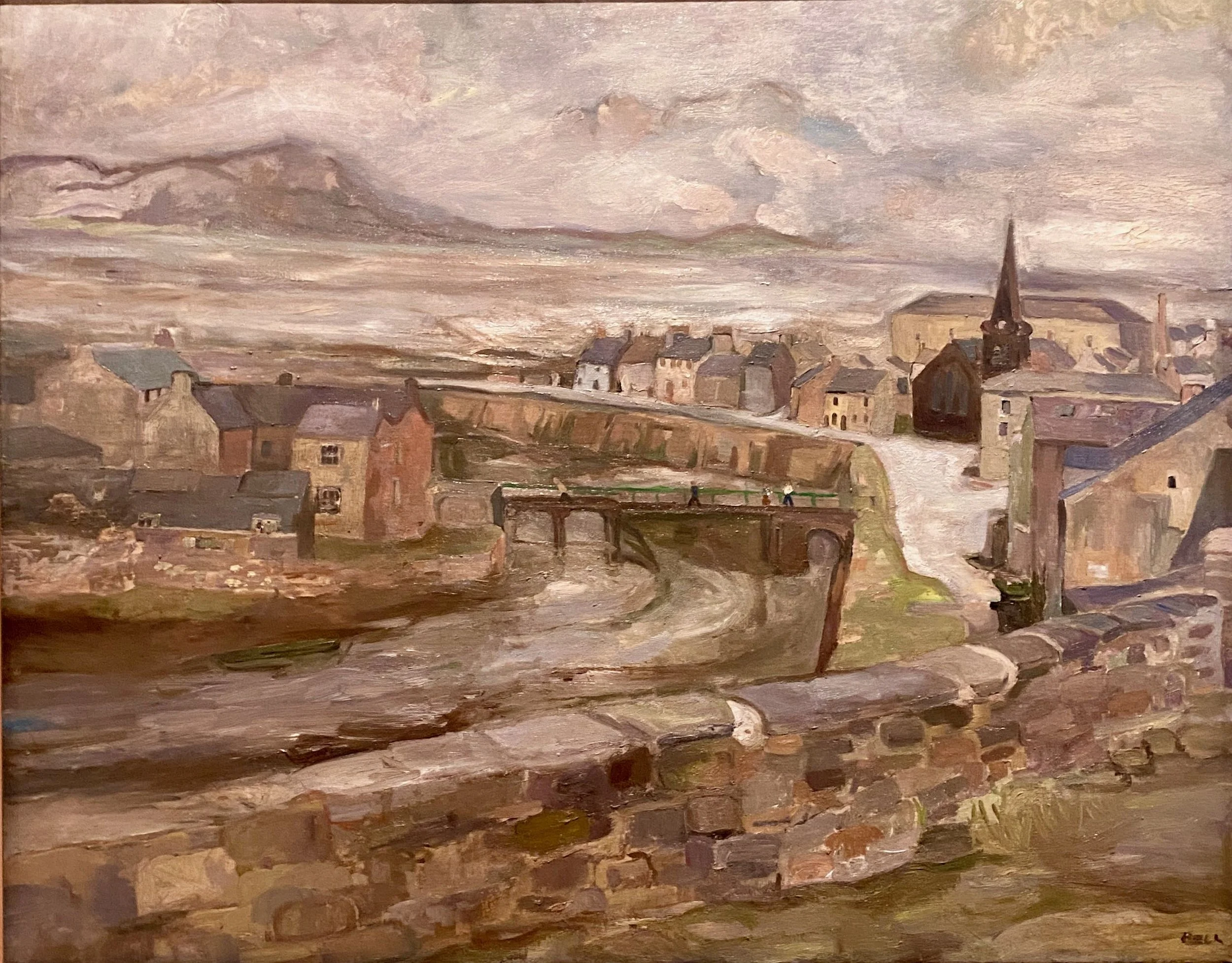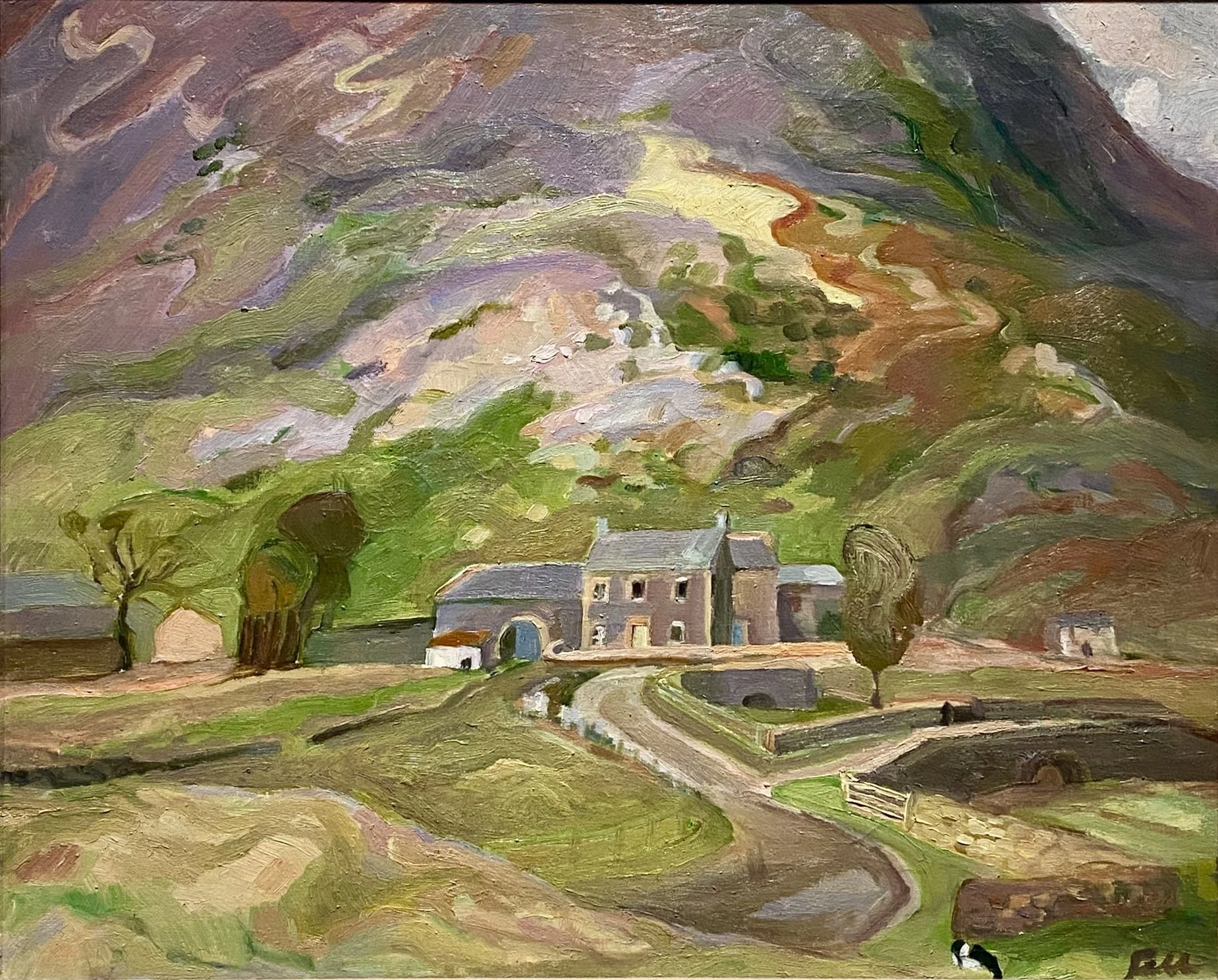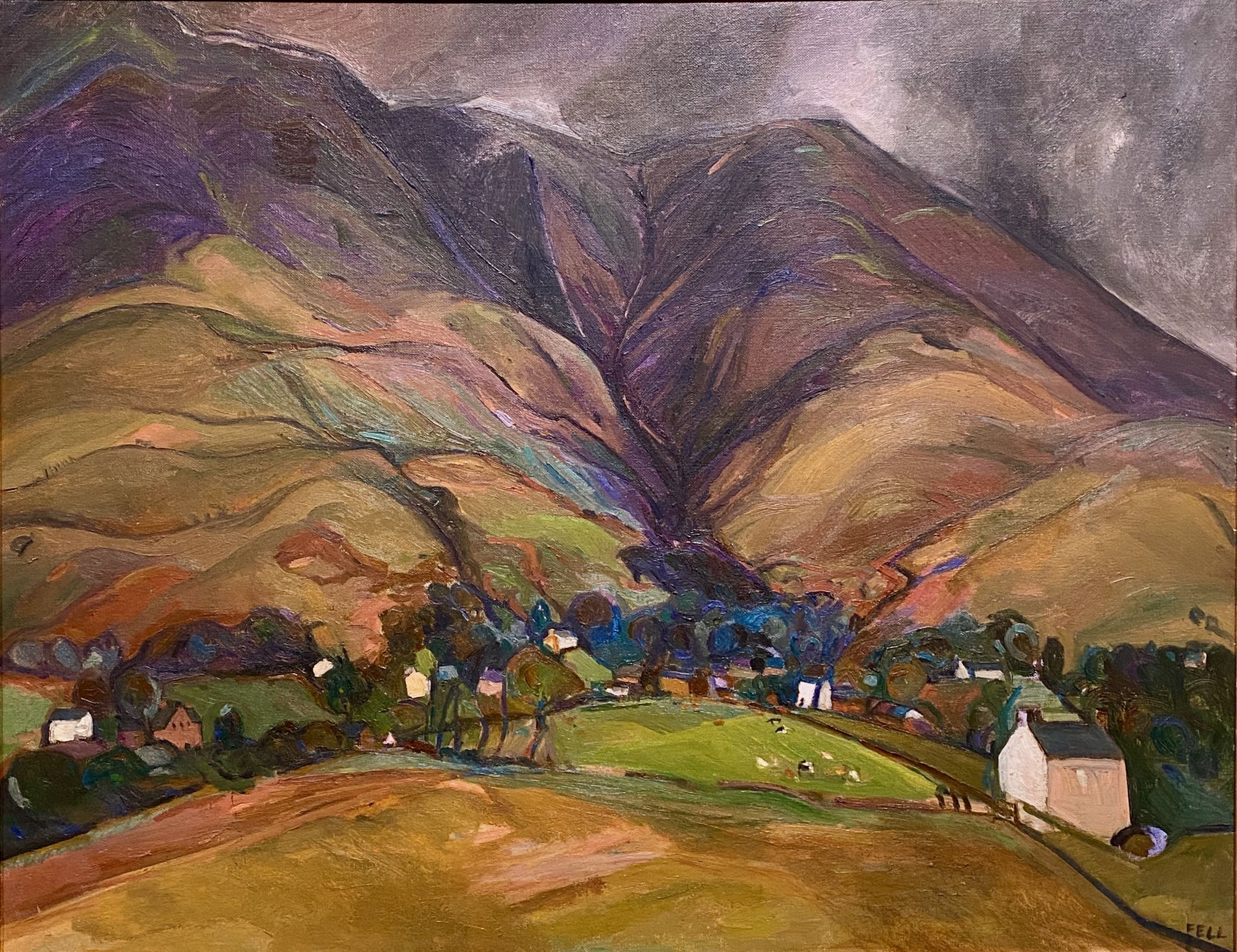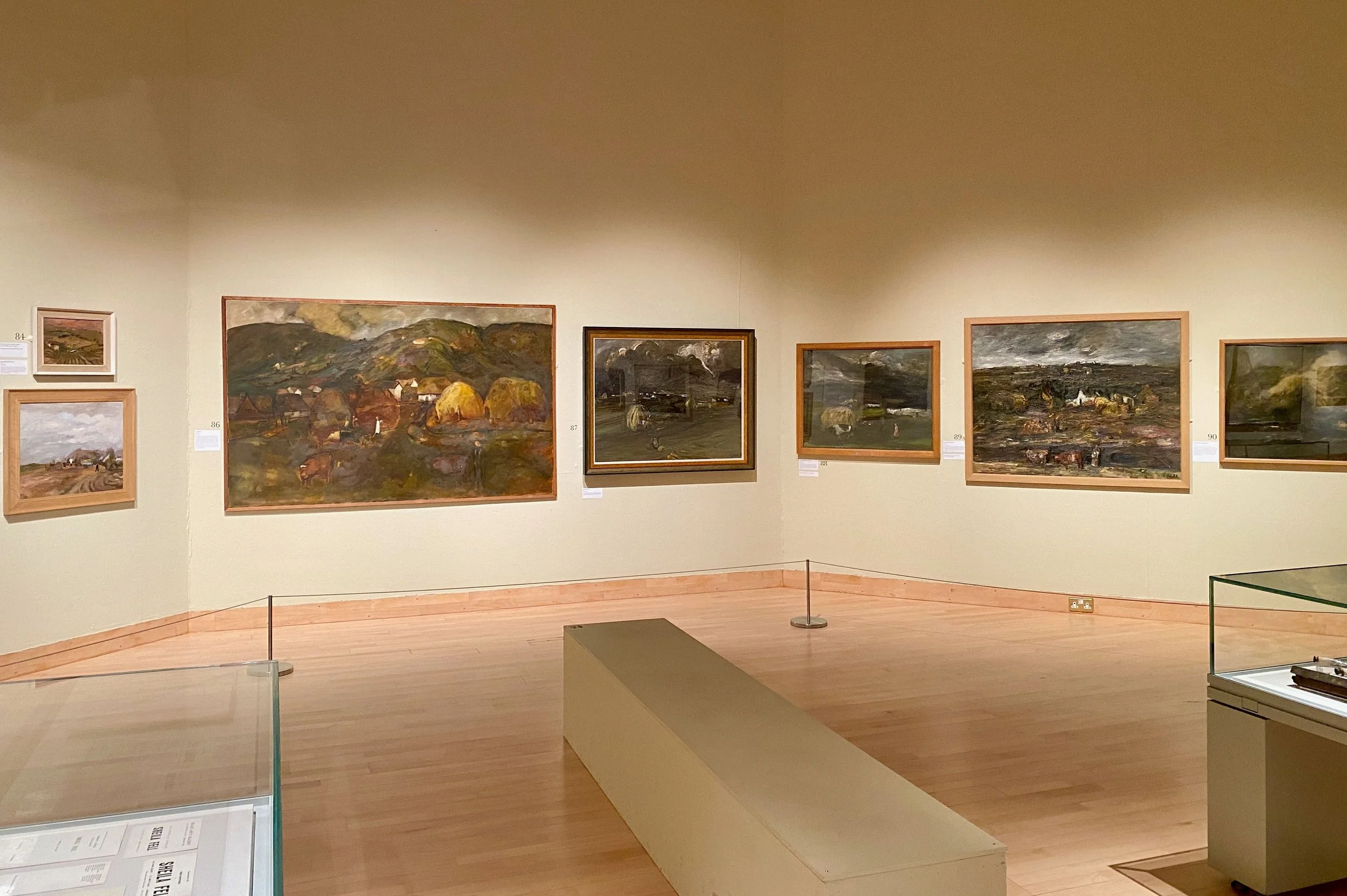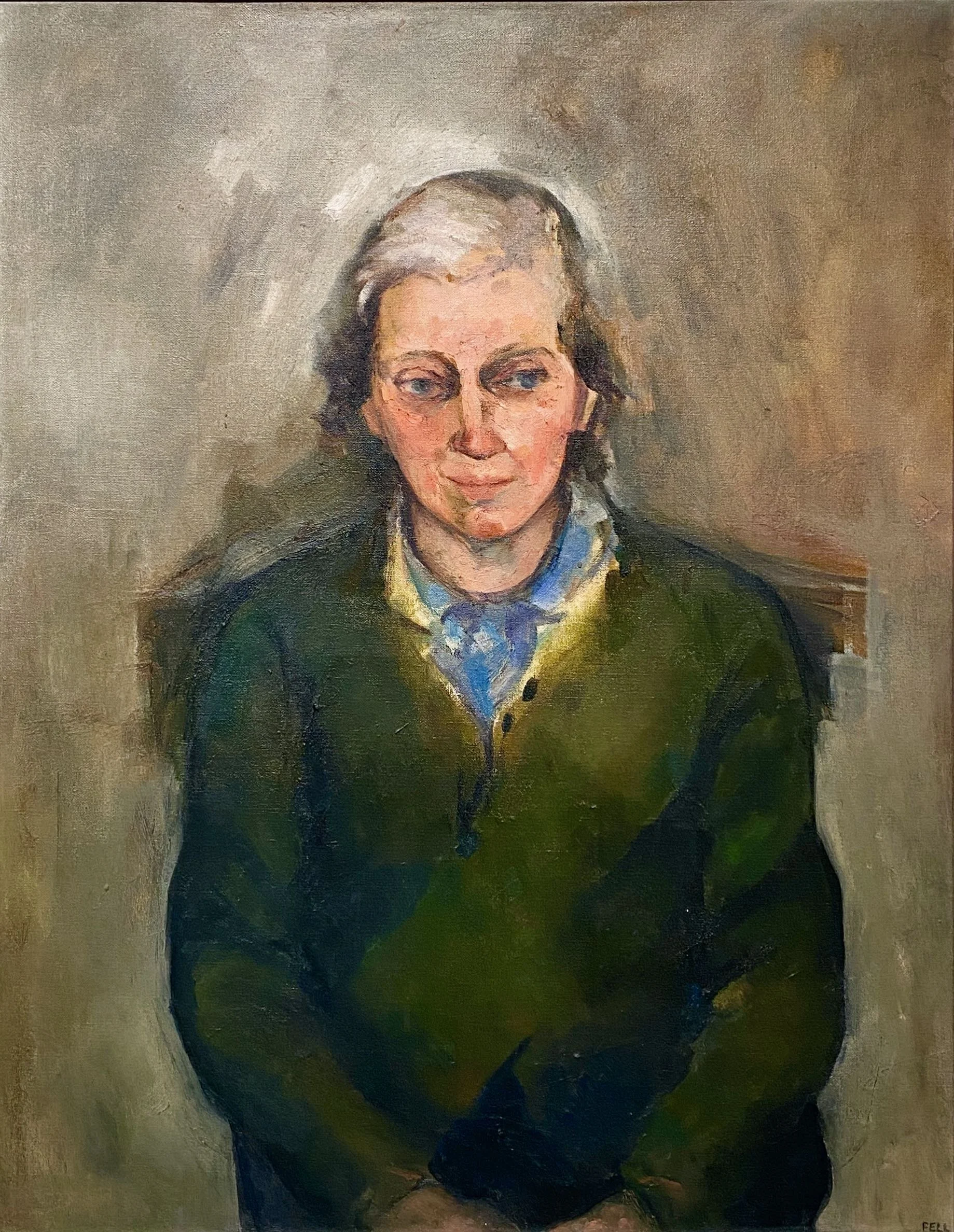Sheila Fell: Cumberland on Canvas at Tullie.
Sheila Fell’s landscapes aren’t just landscapes; they’re historical records, evoking a touch of nostalgia for a way of life that has largely vanished. Take her 1960s scenes of potato harvests: entire communities, especially women and children, coming together to work the land. Viewing these now, in a time where “organic” farming is a luxury and local produce often comes at a premium, you can’t help but reflect on what we’ve lost. I’m not romanticising the gruelling, back-breaking labour of hand farming, but Fell’s work makes me wonder; could we have made that work easier without losing the powerful sense of community it fostered?
Living in Northumberland, I’m regularly captivated by our expressive skies, rarely bright blue but filled with character and drama. Perhaps that’s why I connect so deeply with Fell’s skies; her focus shifts away from the sun to highlight the clouds, colours and shapes that feel more alive, more truthful. She captures the constant struggle of life on the land under the harsh, often unforgiving northern climate, and her muted palette reflects the grit and resilience of the people she painted.
Sheila Fell’s Cumberland isn’t the romantic Lake District of Wordsworth’s poetry. Her focus was West Cumbria, near her childhood home in Aspatria, a lived-in, farmed landscape often overlooked by tourists seeking picturesque views. Fell described it as “a country of sloping hillsides, mines and farmsteads, with the wind blowing in great gusts across the miles of bare earth.” It’s a tough, raw beauty, and the people who lived and worked there, planting, harvesting, guiding livestock along winding lanes, are integral to her vision.
Aspatria itself evolved from a quiet agricultural village to a bustling coal mining town by the late 19th century. Sheila was born there on 20th July 1931, an only child to Ann, a seamstress, and John, a coal miner. The family’s small terraced cottage stood amidst fields of barley and potatoes, juxtaposed with chimneys, pit heads and slag heaps from the local mines. This rugged environment deeply influenced her art. As Fell put it, “All of my inspiration comes from Cumberland — it gives life to my art.”
Sheila only realised the importance of Aspatria’s landscapes after leaving them. Homesick while studying in London, she began obsessively painting the scenes of her youth. Over her lifetime, she returned to Aspatria several times a year to visit her parents, and sketch the landscapes and people that would later inform her paintings.
Her artistic journey began at Carlisle School of Art, then based at Tullie House, fitting as it’s now the site of this remarkable exhibition. From Carlisle, she moved to St Martin’s School of Art in London, where she supported herself with a part-time job,–– while pursuing her dream of becoming a painter. Her big break came in 1955 with her first solo show at the Beaux Arts Gallery. One visitor to the exhibition was L.S. Lowry, who bought three of her works and became a patron, providing her with financial support for two years. Lowry’s mentorship and friendship were transformative to Fell; he even visited Aspatria to sketch alongside her.
By the time the Beaux Arts Gallery closed in 1964, Fell was a respected artist. Her work had been acquired by institutions like The Tate, the Walker Art Gallery, and the Arts Council. She continued to exhibit widely, with solo shows in Leeds, Newcastle, and London. In 1969, she became an Associate Member of the Royal Academy of Arts, and by 1974, she was one of the few women to achieve the title of Royal Academician. Her paintings sold well, and she regularly contributed to the Royal Academy Summer Exhibitions.
Fell’s style was described as a modern form of realism, unsentimental and tough. Her subdued earth tones reflected both aesthetic choice and financial necessity, as brighter pigments were too expensive in her early career. Snow scenes held a particular fascination for her; she often depicted bleak mid-winter landscapes under darkening skies, capturing the transformative, almost otherworldly effect of snow on the Cumbrian countryside.
The exhibition also includes her portraits and drawings. Although she often sketched friends and family, Fell completed only five major portraits during her career, three of which were of her mother. Her charcoal drawings stand as powerful works in their own right, showcasing her skill and the importance she placed on this medium.
Tragically, Sheila Fell’s life was cut short on 15th December 1979 at just 48 years old. Her solo show at the New Grafton Gallery in London had recently opened when she was found dead in her Chelsea flat. The coroner ruled her death accidental, caused by alcohol poisoning. The pressures of preparing for the exhibition and her personal struggles had taken their toll. It was a heartbreaking end for an artist whose work continues to resonate deeply.
Sheila Fell’s paintings are a tribute to the resilience of northern landscapes and the people who inhabit them. Her art speaks to universal themes of place, community, and identity. If you have the chance, visit the exhibition at Tullie, it’s an incredible opportunity to experience the power and beauty of Fell’s work firsthand.
Sheila Fell: Cumberland on Canvas will be on display at Tullie in Carlisle until 16th March 2025 and then travel to Sunderland Museum & Winter Gardens.



